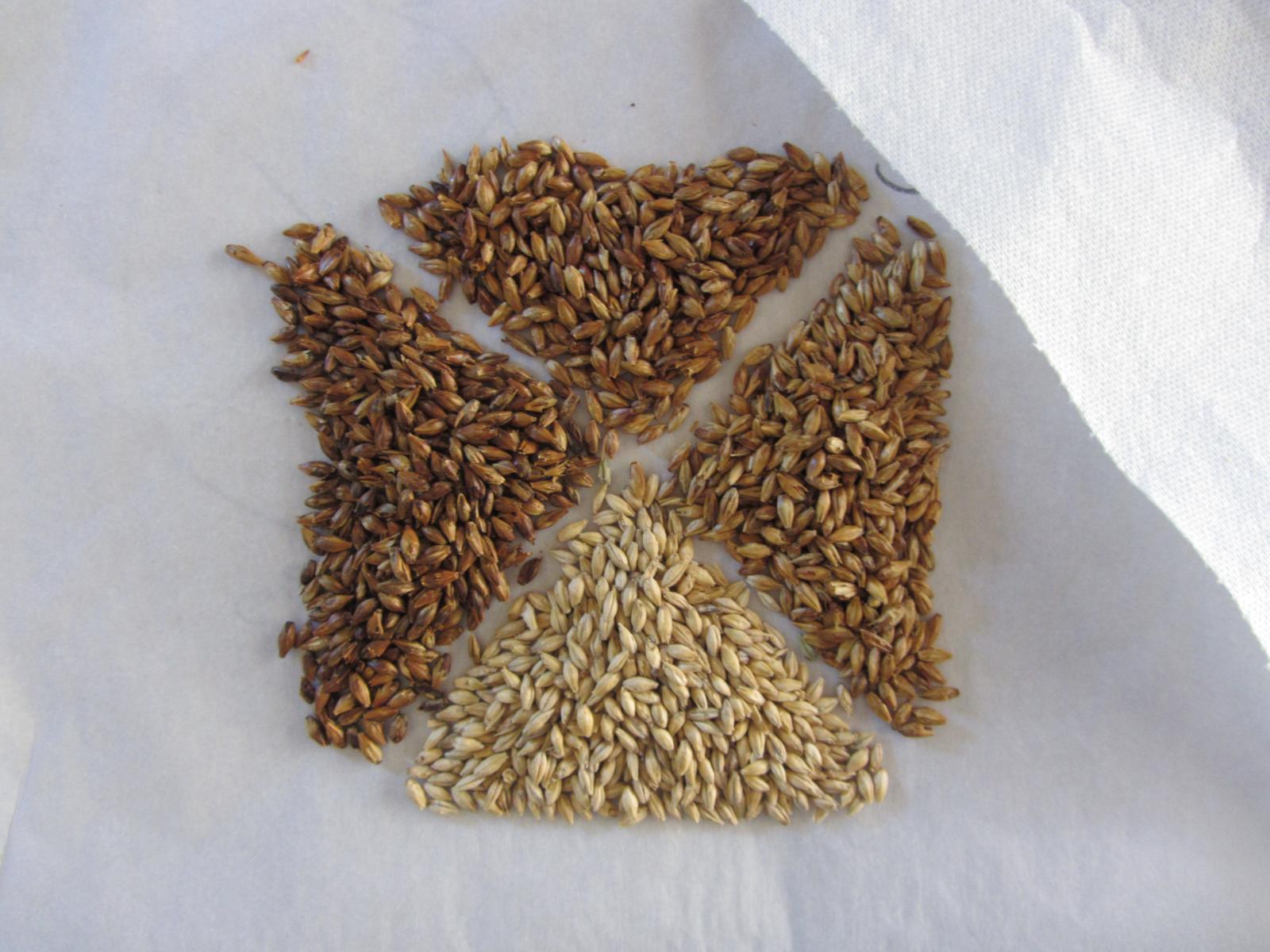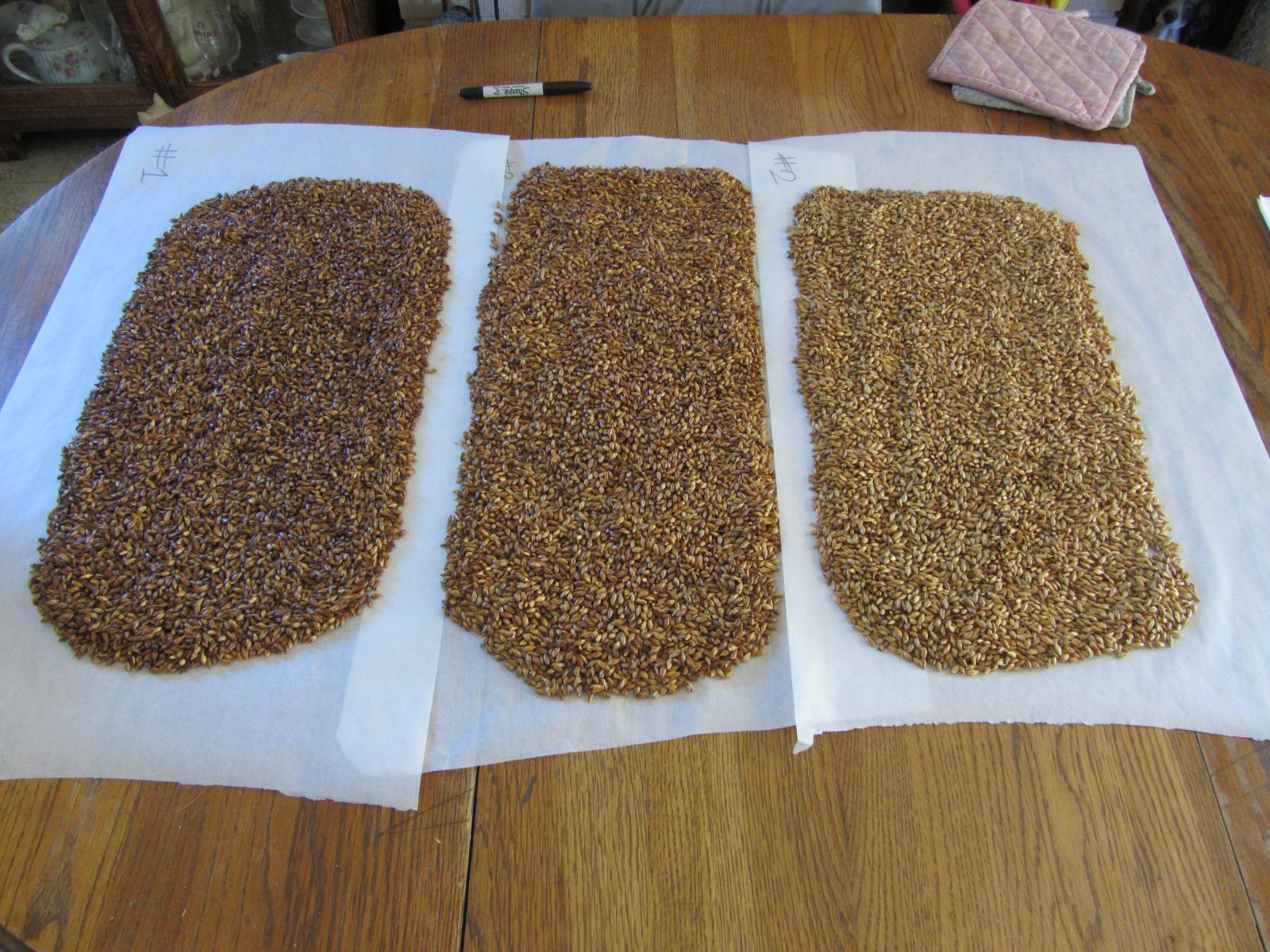pazmanuelo said:
Sorry the process to make chocolate malt is like i describe on de post??
I'm sorry, the link I posted doesn't work. I will copy the important parts, and post them here:
"
How Black Malt is Made:
Black malt is made from fully-modified pale malt, containing around 5% moisture. In contrast, some other specialty malts, including crystal malts, are made from “green” (undried) malt. Plump, full-sized kernels — as uniform in size as possible — are selected because smaller kernels would heat up too quickly in the intense roasting process. The malt is then placed in a roasting drum and rewetted. Next it is kilned at 221–233 °C (420–450 °F) for up to four hours. The exact time depends on the size of the batch. David Kuske, Director of Malting Operations at Briess says that they roast 6,000 lbs. (2,700 kg) at a time. During roasting, the malt loses around 10–15% of its original dry weight.
The temperature of the kiln needs to be tightly monitored. If it rises to 250 °C (480 °F), the malt can turn to charcoal and catch fire. As the malt is kilned and develops its dark color, its progress is carefully monitored. Kuske says that one tool used by Briess is a device that crosscuts the malt, so the interior of the grain can be inspected. Pitting in the endosperm is a sign that the roasting has gone too far.
The color of the malt increases as roasting time increases. Interestingly, though, if roasting is extended too far, extractable color can actually decrease. Given the long, intense roasting period, almost all the volatiles are driven off, leading to a malt that — in stark contrast to its reputation — is actually fairly “mellow” compared to other dark roasted grains. When the desired depth of roasting is reached, it is sprayed with water over a period of 10 minutes. The water cools the malt and stops the development of color. Black malt actually has a moisture content (around 6%) higher than most other specialty grains. The moisture content gives the malt some added stability while it quickly cools the malt.
Another interesting fact about black patent malt is that — unlike pale malts — it is nearly sterile. Some commercial breweries, in fact, use black malt (or black malt flour) in their fermenters rather than the mash tun.
The color of the malt varies from around 470 to around 620 °L and it has an extract potential around 1.025. (In other words, a pound of black malt would yield a specific gravity of 1.025 when mashed in a gallon of water.) Most of the extract from the grain is not fermentable.
Some maltsters offer debittered black malt, black malt that has had its husk removed. The intent is to produce a malt with the roast character, but without the bitterness associated with the husk." (byo.com Nov. 2007. Back in Black. the truth about black patent malt.)
"
How Chocolate Malt is Made:
There are a few different versions of chocolate malt on the market, ranging anywhere from the pale stuff (at around 200 °L) to the dark English (~500 °L). Using a broad brush, the English versions are usually the darkest and the American versions the lightest. Whichever you choose, be sure to account for the differing degree of color (as rated in degrees Lovibond) because 1.0 lb. (0.45 kg) of chocolate malt at 400 °L yields a different color in 5 gallons (19 L) of beer than than 1.0 lb. (0.45 kg) at 500 °L. British chocolate malt is made from 2-row malt while domestic chocolate may be made from either 2-row or 6-row malt. If you have a preference for 2-row, as I do, check the malt specifications.
Chocolate malt is made in a similar manner as black malt. Dried pale malt is roasted at 420–450 °F (220–230 °C), just as black malt is, but for a shorter time — about 2 to 2.5 hours. (For comparison, in actual chocolate production, whole dried "cocoa beans" are roasted at a relatively mild 250–320 °F (120–160 °C) for 30–60 minutes. Coffee beans — used for brewing a different kind of dark beverage — are roasted at 375–425 °F (190–220 °C) for 90 seconds to 15 minutes.)
As the color of the malt increases, so does its intensity, low to high respectively. In addition to regular chocolate malt, Weyermann makes huskless versions of its Carafa® series of malt. Carafa® is a series of dark malts that increase in number as they increase in color, Carafa I® (centered around 337 °L), Carafa II® (~425 °L) and Carafa III® (~470 °L), respectively. I think that the huskless Carafa I® is what comes across as being most chocolate malt-like, but is much smoother and has a less pronounced chocolate character than its husked cousins do. Additionally, other malted grains are made into chocolate malt. Chocolate rye (~250 °L) and chocolate wheat (~400 °L) are the two biggest non-barley chocolate malts. Although similar to chocolate malt made from barley, the rye version has more spiciness and milk chocolate quality. The wheat version has more of a pronounced dark chocolate character". (byo.com Dec. 2007. Chocolate Malt.)



